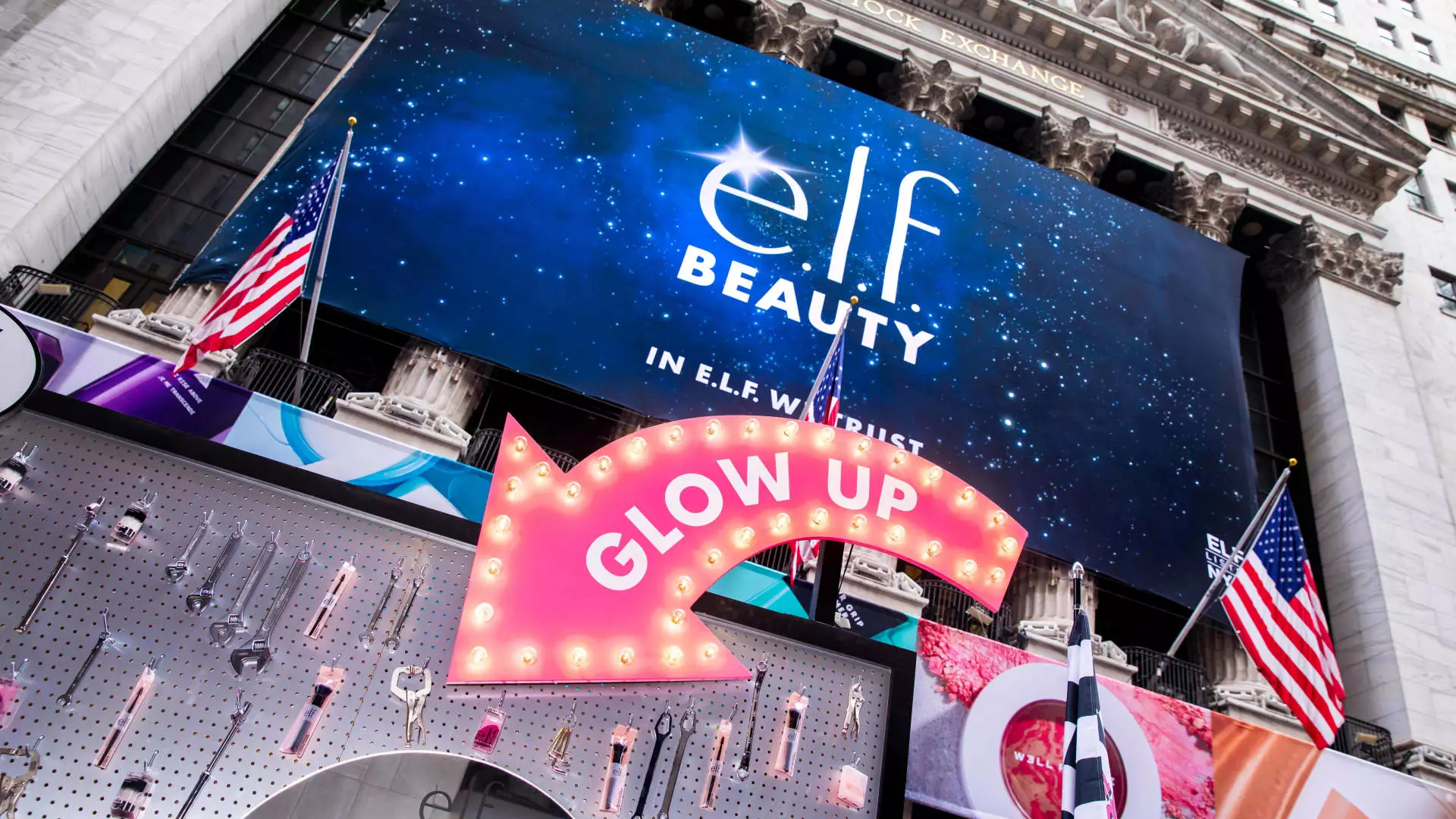As the U.S. grapples with complex trade relations, particularly with China, companies like E.l.f. Beauty have found themselves at the intersection of economic policy and consumer behavior. Recent developments in the tariff environment, particularly the announcement of a 10% tariff on Chinese imports, have elicited a cautious sense of relief from E.l.f.’s CEO, Tarang Amin. This situation underscores the volatility that companies relying heavily on supply chains in China face. The unpredictable nature of tariffs and their implications for pricing strategy have become central to the survival and strategy of many brands.
The decision to impose tariffs has real implications for American companies. E.l.f. manufactures a significant portion of its cosmetics—approximately 80%—in China, making it particularly vulnerable to shifts in trade policy. In a recent interview, Amin expressed a desire to evaluate the potential impact of these tariffs on pricing. “We’ll see whether we need to,” he stated, illustrating the careful balancing act companies must perform between maintaining affordability and protecting profit margins. The uncertainty surrounding tariffs has led to unease within the entire sector, especially since previous tariff discussions hinted at much higher rates, even reaching up to 60%.
Reflecting on the past, Amin recalled the challenges faced during the initial 25% tariffs imposed during Trump’s administration, which prompted E.l.f. to raise prices on a third of its products by $1. Despite these increases, consumer response was favorable, showcasing the brand’s continued ability to attract price-sensitive customers. This historical context is important, revealing that while price increases can initially disconcert, they can also be absorbed by a loyal customer base that values cost-effectiveness.
Today, E.l.f. boasts a reduced dependency on Chinese manufacturing—cut down from nearly 100% to about 80%—demonstrating a strategic pivot that may shield the brand from sudden economic shocks. Furthermore, the company has diversified its market presence, enjoying increased international sales. This broader base may offer E.l.f. a buffer against aggressive tariff measures by allowing it to absorb costs from multiple revenue streams.
The evolving landscape compelled by tariffs sparks a critical question: how will E.l.f. position itself long-term amid these uncertainties? While Amin expressed optimism regarding his company’s supply chain adaptability, he also noted that any impacts from potential cost increases would not be felt until fiscal year 2026. This foresight illustrates the importance of strategic planning and the anticipated need to adjust business models in anticipation of fluctuating global economic conditions.
Additionally, the ongoing tug-of-war between the U.S. and China is fraught with implications beyond immediate monetary concerns. Retaliatory measures from China, such as the blacklisting of companies like Calvin Klein’s parent PVH Corp, reflect the heightened complexities of international trade. Companies must navigate not only tariffs but also the potential cultural and operational fallout of doing business in an increasingly volatile political environment.
E.l.f. Beauty’s experiences serve as a salient reminder of the delicate balance companies must maintain between operational efficiency and consumer pricing. The company is not just responding to current economic pressures; it’s crafting a future strategy that considers ongoing changes in tariffs, manufacturing practices, and international market dynamics. As E.l.f. Beauty navigates these turbulent waters, its approach may well stand as a blueprint for other companies facing similar challenges in the global economy. Adapting strategies while maintaining consumer loyalty will ultimately determine the resilience and longevity of brands in this unpredictable climate.

